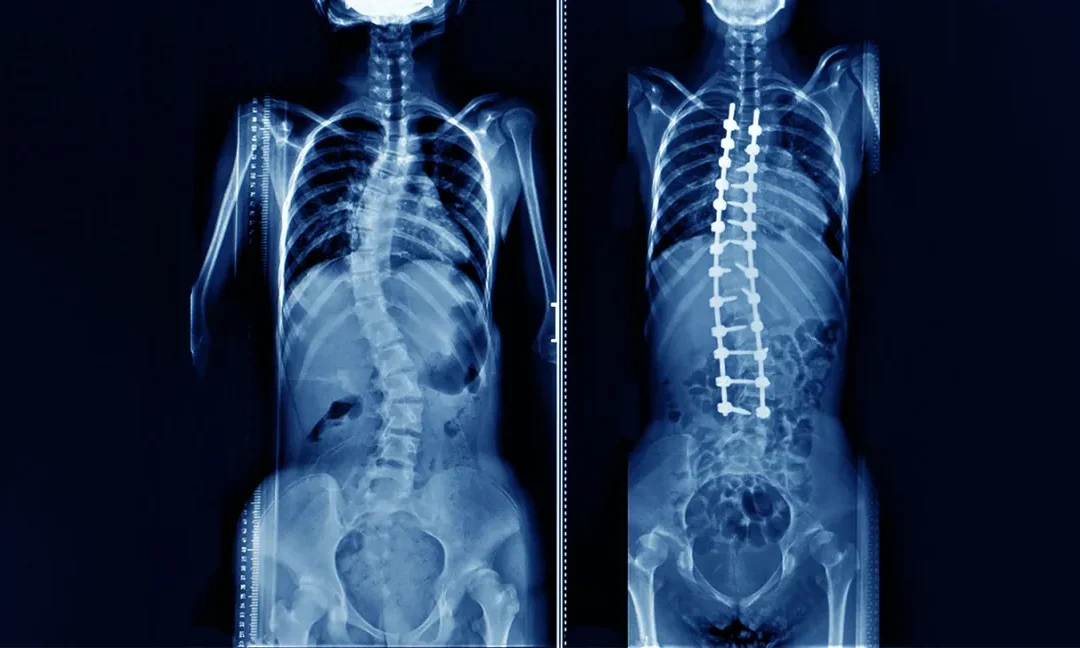June is scoliosis awareness month so we’d like to share how you can better recognize scoliosis symptoms and provide some recommendations on what action steps you should consider in order to establish a well-rounded treatment plan.
For those who don’t know, scoliosis is a medical condition exhibiting a sideways curvature of the spine which typically forms during growth spurts early in physical development.
Unfortunately, the actual cause for many cases of scoliosis often goes unknown.
But not to worry, while the source of scoliosis is often elusive, treatment protocols are plentiful. Before we get into treatment methods, it’s important to know first, how to spot the physical signs of scoliosis symptoms.
So, now for the symptoms, here’s what to look for:
1. Uneven shoulders.
To assess whether or not you exhibit scoliosis symptoms, start simply by standing tall near a horizontal reference. An easy way to do this is by using blue painter’s tape on the surface of a full-length mirror. Take the tape and place it horizontally (at shoulder height) making sure it’s parallel to the ground. Once in place, take a step back and observe your shoulder plane. Are they even, or parallel with the tape? Is one side higher or lower than the other? If one shoulder is above the center of the tape line while the other is below, you may exhibit uneven shoulders, one of the most general scoliosis symptoms.
Keep in mind, however, this symptom alone doesn’t confirm a scoliosis diagnosis but rather suggests additional screening of symptoms may be needed. You see repeated physical patterns such as assuming the setup position while playing golf or continually leaning on your center console during daily commutes may cause an asymmetry in your body that doesn’t necessarily represent typical scoliosis symptoms but may mimic their appearance.
2. One shoulder blade appears more prominent than the other.
If you were to bend forward by hinging at the hips and extending your arms and hands toward the ground in front of your toes, and a friend or spouse is able to identify a protrusion at the shoulder blade (noticeably on one side), you may be exhibiting a telltale symptom. If you have uneven shoulders and/or a protruding shoulder blade, please continue with the next assessment.
3. Uneven hip height.
Alright, so if you have either uneven shoulders or a prominent shoulder blade we’ve got one more assessment to help you gain a bit more insight. Head back to the mirror with your blue painter’s tape and this time let’s bring a wooden dowel or something straight (slightly longer than shoulder width). Take your tape and place it on the mirror horizontally – this time at hip height. Next, take the dowel and place it on the top of the hip bones at each side. Take note, are your hips parallel to the tape, or is one side high or low? If your hips are uneven, you may be exhibiting another scoliosis symptom.
Are you exhibiting any of these symptoms? If so, consider these next steps.
Consult your doctor, chiropractor, or structural integration practitioner. You may find that these assessments suggest you show specific scoliosis symptoms, however, you’ll need a trained practitioner to confirm your findings. Once you visit your practitioner, you’ll likely experience a more in-depth physical exam or even x-rays to confirm any findings uncovered during a physical assessment.
If you feel you exhibit any of the symptoms described above, feel free to drop by our office in Plano for a complimentary assessment. We’ll help to provide some guidance and recommend a treatment plan to help you on the road to recovery.
With so many technology and treatment options available today no one has to live with these symptoms. Visit your practitioner to find out what treatment options are available to help you get back to feeling like the best version of yourself again.
See the video below to learn more about Cecelia Borders’ scoliosis success story after experiencing deep tissue massage & structural integration treatment to treat her symptoms.
This is not medical advice. Should you feel like or be experiencing any symptoms you believe are related to scoliosis please visit your doctor or practitioner immediately.

